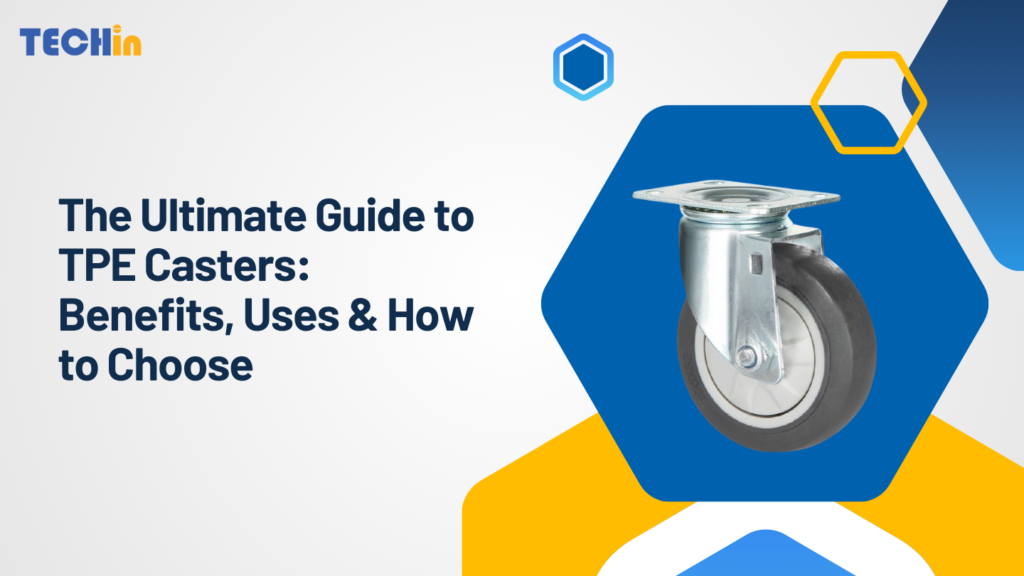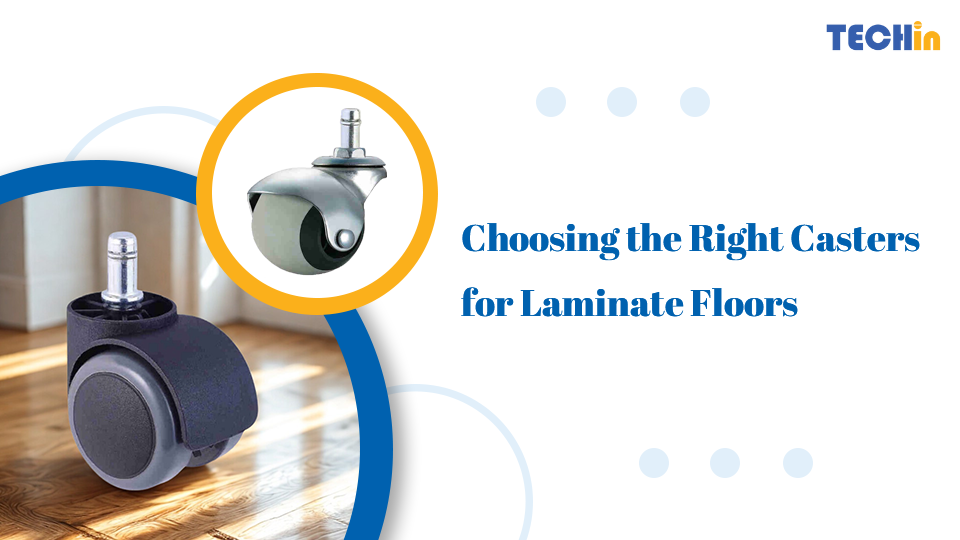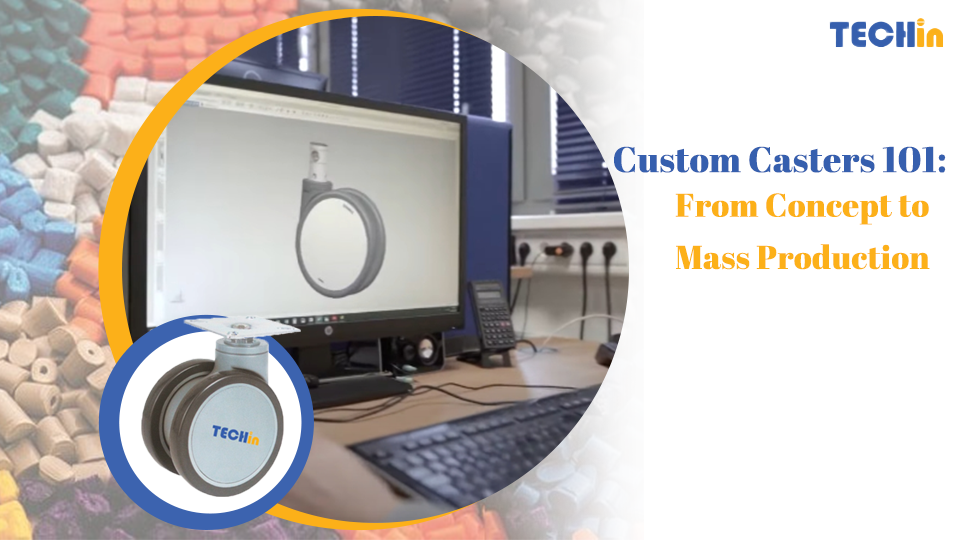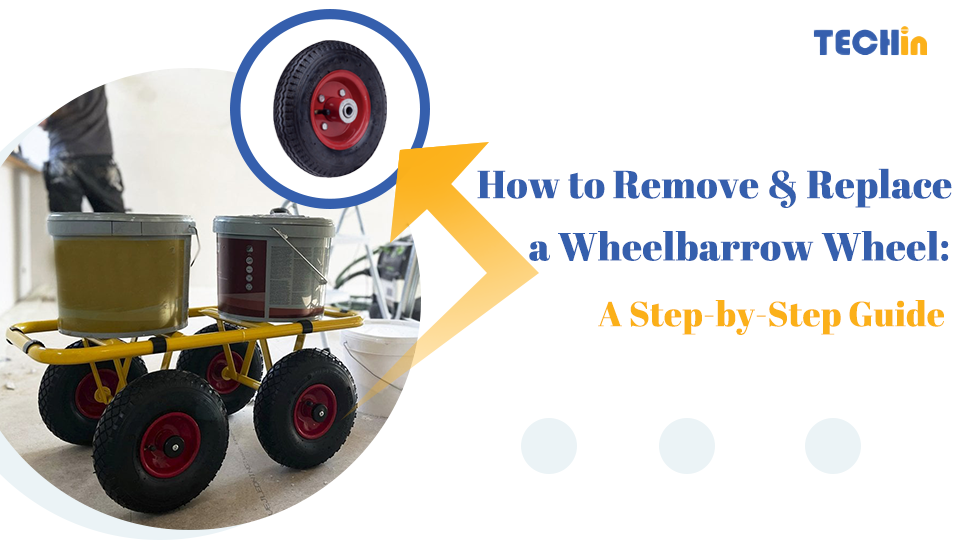Finding the right caster wheel often feels like a trade-off. You want smooth, easy movement, but you can’t risk damaging your floors with scuffs and marks. Noisy, hard wheels can be a constant source of frustration, while some softer wheels wear out far too quickly.
In short, TPE casters are made from thermoplastic elastomers, a hybrid material that delivers silent rolling, excellent floor protection, and high resistance to wear. Perfect for furniture, carts, and sensitive apparatus, they combine the soft, forgiving tread of rubber with the durability of hard plastic. Because TPE casters are non-marking, shock-absorbent, and require minimal maintenance, they have become the go-to choice in commercial, medical, and industrial settings.
Now, let’s dig a little deeper into what makes TPE casters a standout option and how to select the perfect ones for your needs.
What Are TPE Casters?
Think of TPE (Thermoplastic Elastomer) as a high-tech hybrid material that gives you the best of both worlds. It strategically combines the soft, elastic, and shock-absorbing properties of rubber with the strength, chemical resistance, and durability of plastic.
This unique blend results in a wheel that rolls smoothly and gently across floors but is still resilient enough for demanding daily use. They are frequently used on furniture, rolling carts, and equipment where quiet, controlled movement without floor damage is non-negotiable.
What Are the Benefits of TPE Casters?
TPE casters offer a range of significant, practical advantages that solve common mobility problems:
- Silent Operation: They dramatically reduce the clatter and rumble associated with harder wheels. This isn’t just about convenience; in hospitals, offices, and schools, it’s essential for maintaining a calm, productive environment.
- Non-Marking: Unlike many traditional rubber wheels, TPE is formulated to not leave black streaks or scuffs on your floors, keeping surfaces like tile, vinyl, and hardwood looking pristine.
- Excellent Shock Absorption: The soft tread cushions the ride, which helps protect sensitive equipment, electronics, or fragile cargo from vibrations and jarring impacts.
- Low Maintenance: TPE is highly resistant to water, most chemicals, and debris, meaning the wheels won’t degrade easily and require very little upkeep to perform well.
- Smooth, Easy Mobility: They roll effortlessly across both hard surfaces and low-pile carpet, requiring less effort from the user to get things moving.
- Great Temperature Resistance: TPE performs reliably across a wide range of environmental temperatures without becoming brittle or overly soft.
Are TPE and TPR Casters the Same?
This is a common point of confusion. While the terms are often used interchangeably in the market, TPE (Thermoplastic Elastomer) and TPR (Thermoplastic Rubber) are not exactly the same.
- TPE is generally considered a higher-performance material. It’s typically more customizable during manufacturing and can offer better heat and chemical resistance.
- TPR tends to be a bit softer but may wear more quickly in demanding industrial applications or under heavy, constant loads.
- For equipment that is used frequently or carries significant weight, TPE casters almost always provide better longevity and durability.
In summary, both are good non-marking materials, but TPE is more performance-focused and is the superior choice for most commercial and industrial applications.
Common Uses of TPE Casters
Because of their versatility, you’ll find TPE casters used across a huge variety of sectors:
- Furniture: Office chairs, mobile desks, entertainment centers, and shelving units.
- Medical Equipment: Hospital beds, IV poles, trolleys, and sensitive instrument carts.
- Retail & Hospitality: Supermarket carts, food service trolleys, and movable display stands.
- Light Industrial Equipment: Laboratory tables, electronics carts, and mobile workstations.
Essentially, anywhere that requires smooth, quiet, and non-damaging mobility, TPE casters are an ideal fit.
Tips for Choosing TPE Casters
Here’s a practical checklist to consider when selecting the right TPE caster:
- Load Capacity: Don’t just guess. Calculate the total weight of your equipment plus its maximum potential load. For safety, it’s wise to choose casters whose combined capacity significantly exceeds that total weight.
- Wheel Diameter: Here’s a simple rule: larger wheels roll over cracks, cords, and thresholds more easily. Smaller wheels are great for keeping the equipment’s profile low. Choose based on your floor’s condition and your height requirements.
- Mounting Type: This is non-negotiable. Double-check if you need a flat top plate, a threaded stem, or a grip ring stem to ensure a secure and stable fit.
- Surface Type: TPE is an all-star on tile, hardwood, sealed concrete, vinyl, and low-pile carpet.
- Special Features: Consider if you need add-ons like brakes for safety, swivel locks for directional control, or anti-static properties for use around electronics.
💡 Pro Tip: For furniture and apparatus in clean environments, non-marking TPE casters offer the best possible combination of performance, durability, and aesthetic cleanliness.
What Is the Difference Between TPR and Rubber Casters?
Let’s put them head-to-head with traditional rubber to see where TPE/TPR really shines:
- Noise: Both TPR and TPE are significantly quieter than the hard slap of standard rubber on a floor.
- Marking: Traditional black rubber is notorious for leaving scuffs; TPR and TPE are specifically designed not to.
- Durability: Natural rubber can dry out, harden, and crack over time, especially with exposure to UV light or chemicals. TPE and TPR are synthetic and resist this type of aging.
- Cost: TPR is often more affordable than TPE but is generally less rugged and durable.
For most professional and commercial uses, TPE outperforms both traditional rubber and TPR in terms of rolling comfort and long-term floor protection.
Summary
TPE casters expertly combine the best attributes of plastic and rubber, offering a modern solution for silent, floor-safe movement. They are a reliable, durable, and smart investment for a wide range of equipment.
Have questions or need help choosing the perfect caster? Contact us—we’re here to help you with your buying decisions.









